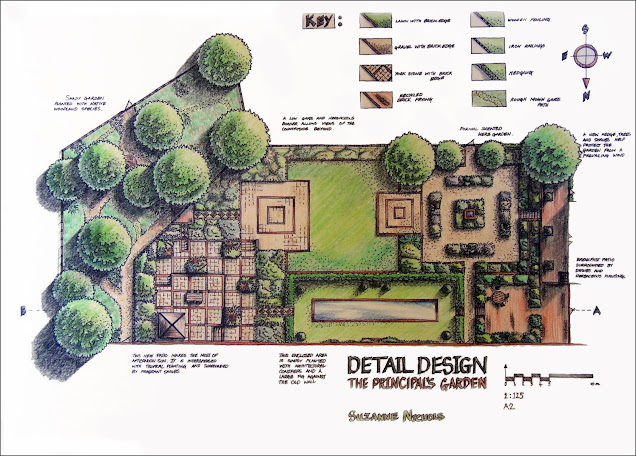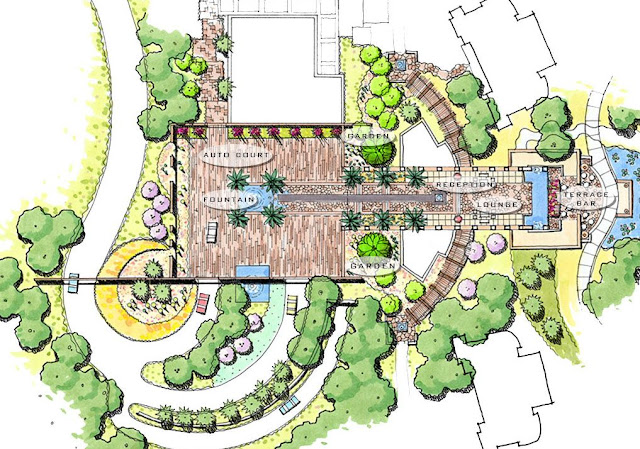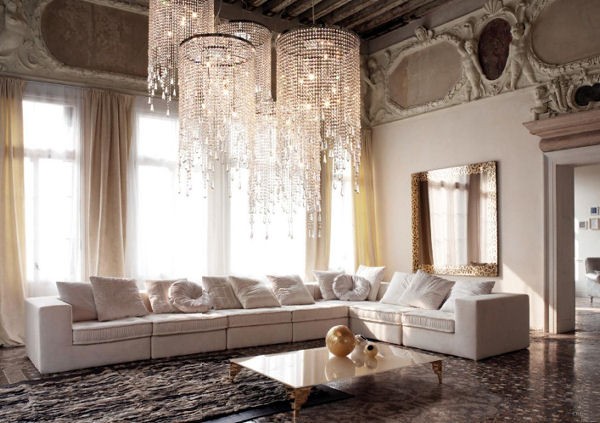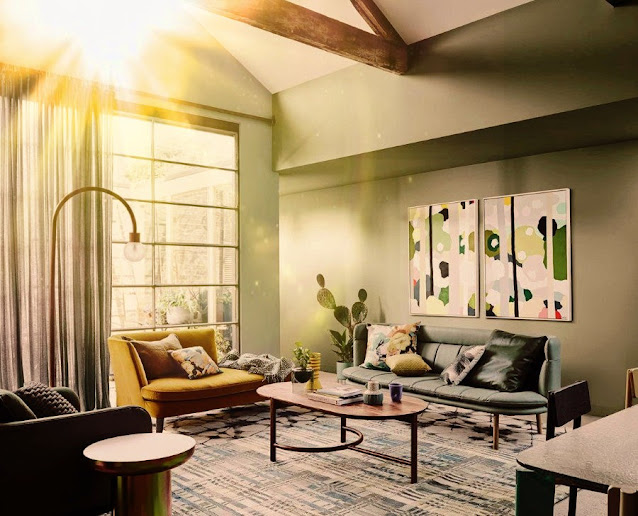Draw a Landscape Plan tо Sаvе Mоnеу - We all enjoy being in or looking at beautiful landscapes. But there are functional elements of every landscape that must be included in order for it work right. That is where having a good landscape plan prior to installation is crucial. Having a landscape plan can do two things. One, it allows you to see what the installed design will look and feel like prior to installation.It's better to make mistakes on paper than in your yard. Two, it gives you a scaled plan from which you can estimate construction costs from.
Site Inventory and Analysis
 |
| source: pinterest.com |
Before any plan can be drawn, you must have a plan drawn "to scale" of what you already have. That is, the plan needs to be drawn to a known scale, for example 1/8"=1'-0". If you have a copy of a survey that was done when you purchased your home then you can use that as a base plan. If not, then use a 100' tape measure and locate all existing elements such as your house, trees, bedding, water features, etc. Taking an inventory and analysis can is the foundation of having a great draw a landscape plan. There may be items that you want to design around such as a specimen oak tree or an exquisite water feature. Here are some things to consider: What are the spaces going to be in my back yard?
In other words, do I want to have an entertainment area(s) such as a deck or patio? How much space do I need to allocate for this in comparison to my overall square footage? Are there any other fun activities that your family and friends enjoy doing together? Will there be games played such as croquet, horse shoes or volleyball? Even with small yards these things need to be considered when you are in the planning phase. Next, begin to look at views coming in to your yard as well as going out. Are there any great opportunities to enhance these views with landscaping? You may want to use landscaping or architectural elements to screen or enhance these views. Some other items to look at during this phase of the draw a landscape plan are sun/shade patterns, existing grading (that is how much of a slope you have in your yard and what directions the ground slopes) and noise sources.
Developing a Sketch Plan
 |
| source: hgtv.com |
Once you have taken an inventory and analysis the next step is to begin laying out the spaces that will be included in the landscape. This is where you can begin to get creative and use your imagination! On tracing paper with your base plan underneath, you can begin sketching out the spaces you want to include in to your draw a landscape plan and how they will correspond with each other as well as how the landscaping will work with it. (You don't have to know what every single plant's characteristic is, but you do need to know some important items like size, shape and whether it is deciduous or evergreen.
For blooming plants, knowing when they produce their blooms and how long they will last is good but not absolutely necessary.) Items to think about including here are a patio, deck, gazebo or pergola, vegetable or herb garden space, landscape bedding areas and turf. In addition, you can identify places where you would like to plant new trees and shrubs. They can anchor the landscape and create a setting for the other elements to play off of.
TIP: Make sure that you have some drafting supplies such as a scale, circle template and possibly a compass for any radial designs that you may have. It doesn't have to be perfect, but it does need to be accurate. Some folks are evening using design programs like Google Sketch Up. It is a very easy program to learn (just watch the tutorials) and can make a huge difference in how you look at your landscape design.
Working Out The Details
 |
source: pinterest.com
|
Finally, deciding what materials you are going to use will be critical to how it will be experienced by you and your guests. At this point you will want to begin deciding on both hardscape and softscape materials, e.g. plant types, hardscape materials such as brick paver colors or lumber for decking and pergolas.
TIP: Adding some color to your landscape plan will help give you a good idea of how these materials will look together. Use colored pencils or markers to help or use a program like Google Sketch Up.
Visit your local stone yard, nursery and home improvement stores to get samples so you can a sense of how all of these materials will be used together as well as for your cost estimate. You can use your plan to estimate the total cost for the project. Now that you have a final plan, you can use it to estimate the total cost of the project. To get your square feet of areas, break down the areas in to small rectangles and squares, get the square feet for each portion and add them together. For plant material decide whether you want to go with larger gallons (5 gal. and up) or small (1-3 gal.). The price can vary a great deal and can make a big difference in the overall estimate.
One other component to include in to your plans is landscape lighting. Landscape lighting can enhance those landscape components that you spent time designing. There are many options out there from LED lighting, solar lighting to traditional incandescent lighting. Solar lighting is becoming more popular because of its ease of installation as well as the fact that costs very little to maintain. But there are some situations where you may need other types of lighting as well. On your landscape plan you can use a pencil to draw dots to locate where you would like to place your landscape lights. Think about what elements need up lighting, down lighting or spot lighting. Outdoor lighting can make a huge difference in how your spaces will feel to the guests.
This may seem like a big task but it really isn't. Remember, it doesn't have to be perfect. The more planning you do the closer you can get to the landscape of your dreams. Take the time to plan it out, you'll be glad you did.
tag: draw a landscape, landscape drawing, drawing of landscape, landscape drawings, drawing a landscape, drawing for landscape, drawing landscape, drawing the landscape, draw landscape, drawings landscape, landscape for drawing, landscape to draw, draw the landscape, drawing on landscape, drawings of landscape,


































.jpeg)
.jpg)
.jpg)
.JPG)
.jpg)
.jpg)










